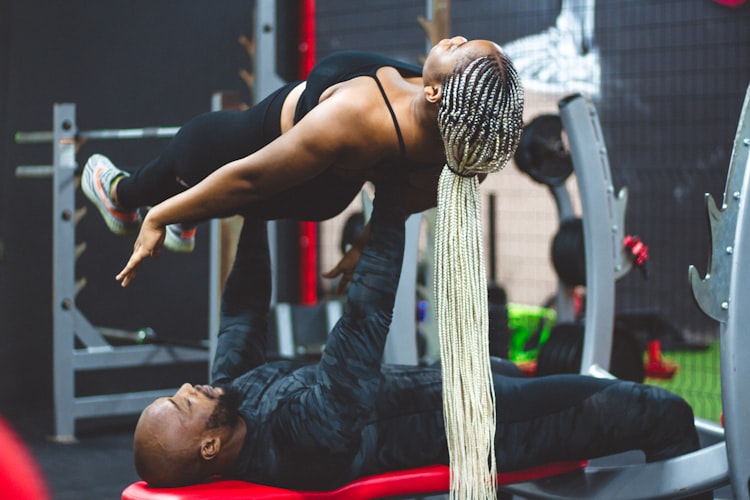Is Joint Clicking a Problem?

tl;dr:
The Litmus Test:
Is there pain with the cracking/popping/clicking/crackling/grinding sound in your joint?
No –> Keep doing what you’re doing, it’s probably not a big deal. Get some traction on the joint in question maybe if necessarily.
Yes –> See a medical professional to rule out something serious and then start on the rehabilitation process once cleared if need be.
Joint clicking most of the time isn’t a big deal, so don’t stop what you’re doing.
Pain is a big deal though, so get it looked at if you're experiencing pain.
Well the summer is dwindling down, and that last thing I was thinking was joint clicking.
That means it’s back at things a little more full tilt, and while I’ve updated a few things on my current side project (well second side-project), and done a boat load of work on Fitnack this summer I haven’t done much writing here on SBF.
Lots of stuff started and certainly plenty of questions that I need to post but this question came at a fitting time when I needed a little kick in the pants to write something:
“Darren. I’m 52. I found an online nutritionist and fitness trainer. My food intake was to stay within 1200-1400 calories and exercise specifically cardio (stepping on an elliptical). My first goal was to go to the gym 35 times, an hour per session. Preferably 6 times a week. I got to 22 sessions then my knees started clicking and the trainer told me to stop stepping and go to the doctor. I went had ultrasound and MRI. They say they find no problems except a little water behind each knee.
My question, can I go back to doing cardio in this way. I usually put the resistance to the highest mark and the step incline on two. Thank you”
A lot of people experience some joint clicking or cracking, and seem concerned, so this seemed worth writing about today.
Just last week an online client told me they were experiencing some knee joint clicking during a squat exercise I prescribed and expressed concern.
Throughout my career, with a great deal of frequency people seem very concerned when joints start making strange sounds.
There is a natural reaction to want to get it looked at or think there might be something wrong.
Fret not…
First and foremost you should be asking an obvious question:
Is there pain?
If no, then there is probably no need to rush and and see a doctor for them to tell you what this article will.
It’s probably just your trainer over-reacting to something they may not fully understand.
Joint Clicking
Joints click sometimes, it’s called crepitus and most of the time it’s not a concern.
More often than not this is just gases in the joint or synovial fluid moving around. The joint clicking is the gases or fluids move from one area to another and pass through confined spaces. Not unlike cracking your knuckles but to a much lesser extent.

Sometimes it is two things rubbing together. Usually bone sliding over bone as cartilage degrades in the aging process. What once may have been a slick coating at the end of a bone in a joint isn’t so slick anymore.
However all joints rub by their nature and this is not a major concern, it’s just that some of the protective elements of cartilage have lost some resiliency with age. You don’t have to rush out worried that you’ve torn or broken something just yet.
It’s kind of like a gasket that cracks and dries with aging, it’s still good for a while yet but it doesn’t look right (or in this case, sound right).
Or the theoretical line of pull has changed somewhat in some cases but that’s more complicated than I want to discuss her.
If the joint clicks but there is no pain, then it’s usually best just to roll with it and accept it as fairly normal, especially as we age. You’re probably not doing any additional harm to yourself, at least any more than aging is a harmful event.
As we age our joints retain less hydration (synovial fluid), and cartilage degrades, so we can get more rubbing than usual in certain joints depending on the person, the usage, the movement, etc…
Movement theoretically should help maintain synovial fluid viscosity (water is more viscous than honey or oil) and at least keep it moving around comfortably. Generally more movement is better.
The impact of training can help drive adaptive bone density changes and possibly cartilage maintenance to a certain extent as well — though jumping, sprinting and heavy weight training are probably better at this then walking up stairs, stairs are better than saw swimming or cycling.
Occasionally crepitus can be something more severe like a fracture, bursitis, or tenosynovitis but these would come with obvious clues, the most obvious usually being pain or a specific injury-moment.
Provided you don’t have pain, and more specifically the step machine doesn’t actually ’cause’ pain; I see no reason why you can’t continue doing your cardiovascular exercise.
Truthfully I see no reason why you should have stopped in the first place. Movement done pain free is pretty much always a good thing.
It’s sounds like this was the case as it is with most people, not that there is anything wrong with being overly cautious.
Pain is Different
However, if you were experiencing pain, it is certainly a good call to go and get it looked at by a medical professional (probably a doctor, ideally a specialist if it goes that far) sooner, rather than later.
Assuming all testing comes back negative and no damage is present, then the doctor should recommend physiotherapy but it’s been my experience for some reason that they don’t always.
Doctors are not trained in rehabilitation (except physiatrists) but if you have pain and want to get back to an exercise it’s best to see the right medical professional and for matters of joint pain, that’s usually a physiotherapist.
Though in the modern day you might find a qualified chiropractor (who are more recently being trained more and more like physios) or an alternative health practitioner of some kind, depending on where you live like an osteopath (physicians in the States but not Canada).
It is true that most pain is short-lived and will take care of itself given time but it’s best to get to know your body and rehabilitation generally speeds up the process if nothing else.
Even though there isn’t physical damage that appears on imaging, doesn’t mean there isn’t some problem going on that could be leading to joint clicking and pain that you should be educated on.
A physiotherapist is trained in dealing with the rehabilitation process and would work with you over time to provide relief to such a point as you can return to exercise pain free.




